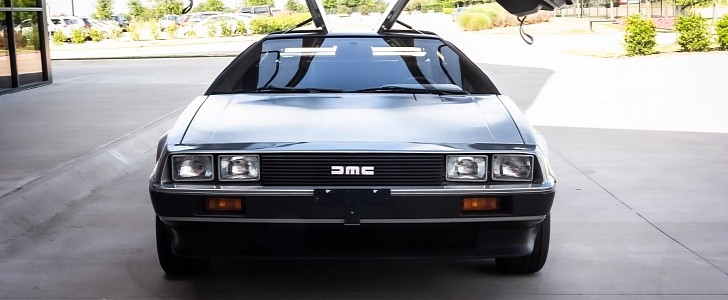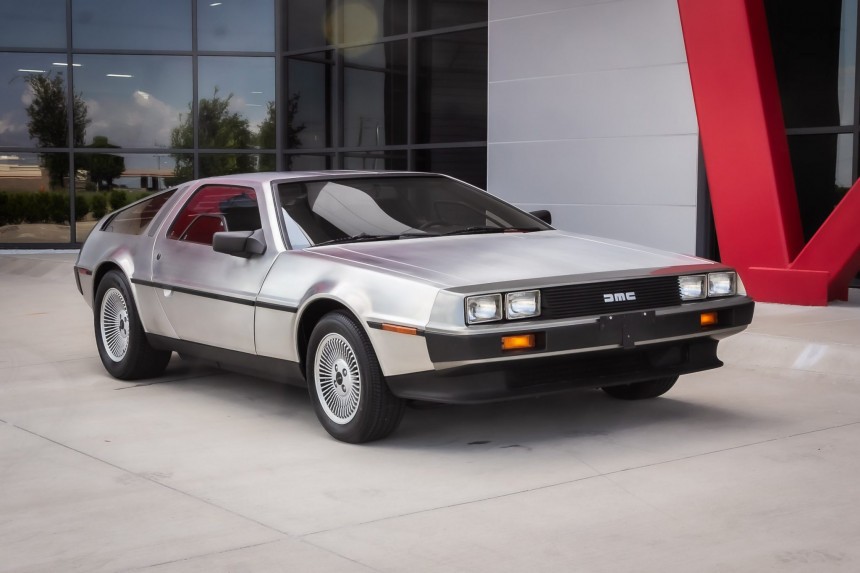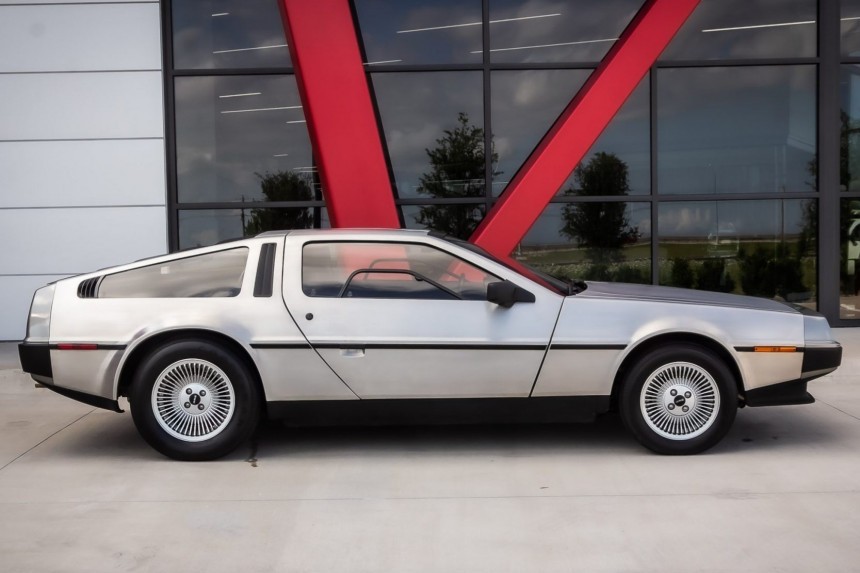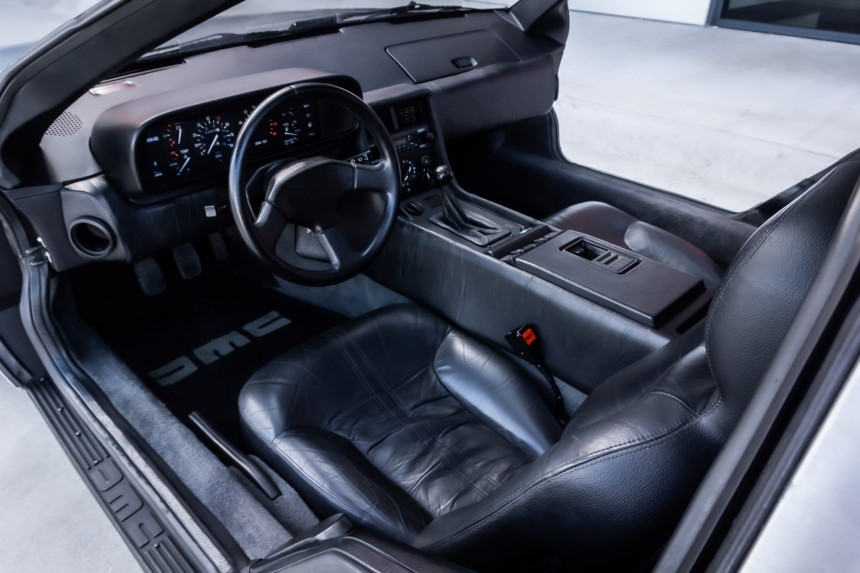Back in the early '80s, Americans didn't have a proper, mid-ship engine, supercar. Sure, we had the 'Vettes, the 'Stangs, the Firebirds, and so on. But there was no proper supercar built by an American brand with the engine mounted between the driver and the rear axle, like a Ferrari or a Lamborghini.
But then came the DMC12. A surprising car that looked fast even when it stood still in front of a theater. This October is the Iconic Vehicle Month here at autoevolution, and the DMC12 fits perfectly to it. It's already a classic car that can be found in famous collections. Even the Petersen Automotive Museum has one. The one from the famous movie "Back to the Future."
In 1975, the former GM Exec founded DeLorean Motor Company: DMC. He addressed Giorgetto Giugiaro to design a stunning car with a mid-mounted engine and two gullwing doors. And that's what the Italian car designer did, and it was a masterpiece for those times. Obsessed with the idea of rotting cars, DeLorean built the sports car with fiberglass, plywood, and stainless steel.
DeLorean needed funds to build his dream car, but he realized that he couldn't do that in America, so he crossed the Atlantic and landed in Belfast, Northern Ireland. There, the Development Agency was eager to produce something and give people something to work on. They gave DeLorean substantial funding of GBP100 million (that's 1.7 billion pounds in today's money) to build the factory there. By those times, the average monthly income in Northern Ireland was about GBP200 (around $400). DeLorean built the assembly plant in Dunmurry, a suburb of Belfast.
Production delays led to the official unveiling of the car on the market in 1981, but it came wrong. The U.S. was in recession, and the MSRP for a DMC12 was $25,000 (or $72,000 in today's money). Still, around 3,500 cars found customers in the U.S. But the factory already produced 7,000 of them and waited for buyers that didn't come. Then, the disaster struck: the FBI arrested John DeLorean for drug trafficking. He was acquitted in 1984, but it was way too late for the car company, which went bankrupt in 1982, and the British Government seized the factory.
The DMC12 featured an independent suspension and disc brakes in all corners, which matched the sports car status. Yet, due to the lack of power, nobody was impressed. A 10-second time from 0 to 60 mph was too long even by the '80s standards. So DeLorean built the car with a choice for a five-speed manual or a three-speed automatic.
All cars were silver, unpainted since DeLorean considered that the car didn't need any paint. Thus, it was more of a GT-car, even though it lacked finesse and performance for one. Yet, its unique appearance made people fall in love with it. Some cars were modified and received more powerful turbocharged powerplants. With those modifications, it could walk the talk, not just talk the walk.
Maybe the car wouldn't be remembered by anyone if it wasn't for the 1985 "Back to the future" franchise. The factory was closed for several years already, and DeLorean was free when the movie hit the silver screen. Yet, John DeLorean sent a "thank you" note to Bob Gale, the franchise's writer and producer. Once famous, John DeLorean lived the rest of his life in trials and problems and passed away in 2005. He sold his land to Donald Trump, left the 15-room two-flat apartment in Manhattan, and moved into a condominium in Morristown, New Jersey.
Stephen Wynne, the company owner, tries to sell new cars under the "Low Volume Motor Vehicle Manufacturers Act" (H.R. 2675). Meanwhile, on auction sites, DeLorean DMC12s are sold with prices between $35,000 and $60,000. The cheapest ones are those painted by owners. A DMC12 must be silver, unpainted.
DeLorean beginnings
John DeLorean was one of the big-shots from GM. The man who brought the Pontiac GTO on the market but also banned the mid-engined Corvette. He was the youngest GM executive and the most controversial one. Yet, he was not just popular among his colleagues but loved by the masses. That said, in April 1973, he resigned from the top position as Chevrolet executive.In 1975, the former GM Exec founded DeLorean Motor Company: DMC. He addressed Giorgetto Giugiaro to design a stunning car with a mid-mounted engine and two gullwing doors. And that's what the Italian car designer did, and it was a masterpiece for those times. Obsessed with the idea of rotting cars, DeLorean built the sports car with fiberglass, plywood, and stainless steel.
Production delays led to the official unveiling of the car on the market in 1981, but it came wrong. The U.S. was in recession, and the MSRP for a DMC12 was $25,000 (or $72,000 in today's money). Still, around 3,500 cars found customers in the U.S. But the factory already produced 7,000 of them and waited for buyers that didn't come. Then, the disaster struck: the FBI arrested John DeLorean for drug trafficking. He was acquitted in 1984, but it was way too late for the car company, which went bankrupt in 1982, and the British Government seized the factory.
The car for the future
When he imagined the car, DeLorean chose a European powerplant. It was a 2.9-liter V6 developed in joint-venture by Peugeot, Renault, and Volvo, hence its "PRV" nickname. Bosch developed its fuel-injected system. Due to the American emission control systems, the engine provided just 132 hp, which was not enough. In addition, the stainless-steel bodywork was too heavy. Despite its Lotus-engineered chassis, the car suffered from other problems due to cost-cutting solutions. For instance, the DMC 12 featured the same springs for both axles. Since the vehicle's rear was heavier due to the engine and transmission, it stood with its nose in the air.All cars were silver, unpainted since DeLorean considered that the car didn't need any paint. Thus, it was more of a GT-car, even though it lacked finesse and performance for one. Yet, its unique appearance made people fall in love with it. Some cars were modified and received more powerful turbocharged powerplants. With those modifications, it could walk the talk, not just talk the walk.
A new hope
In 1995, a Texas-based company acquired the parts inventory that remained unsold after the factory closing and started to reconstruct, restore DMC cars. In 2014, Sally Brown, John DeLorean's widow, sued the company for misusing the company logo and brand name, but the two parties settled down in 2015.Stephen Wynne, the company owner, tries to sell new cars under the "Low Volume Motor Vehicle Manufacturers Act" (H.R. 2675). Meanwhile, on auction sites, DeLorean DMC12s are sold with prices between $35,000 and $60,000. The cheapest ones are those painted by owners. A DMC12 must be silver, unpainted.














